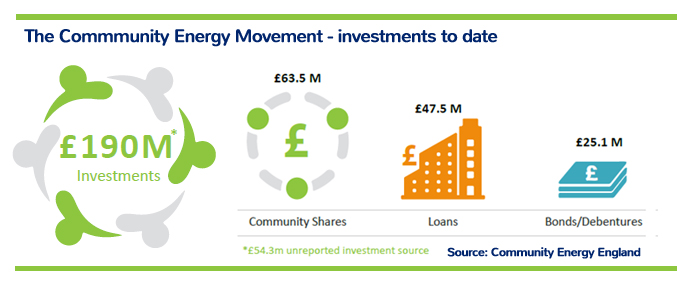The UK’s community energy movement has mushroomed to a staggering £190 million, according to a new report. Community Energy England launched their
State of the Sector report in Manchester last weekend, which showed:
- At least 30,000 people have invested in community energy groups
- The movement has built 188 MW of renewable energy capacity
- 222 community energy groups now exist across the country
- In 2016, these groups alloacted £620,000 to community benefit funds.
Most of the cash raised has been through co-operatives (186 of the 222 organisations surveyed were Community Benefit Societies, a form of co-op). Almost all projects last 20 years; that so many people have invested so much shows a long-term grass-roots commitment to renewable energy.
Less than ten community energy organisations existed in 2010. The report shows the movement has bloomed due to an army of pioneers: 1700 volunteers were reported as actively supporting community groups. The movement is also supported by at least 116 full time employees.


